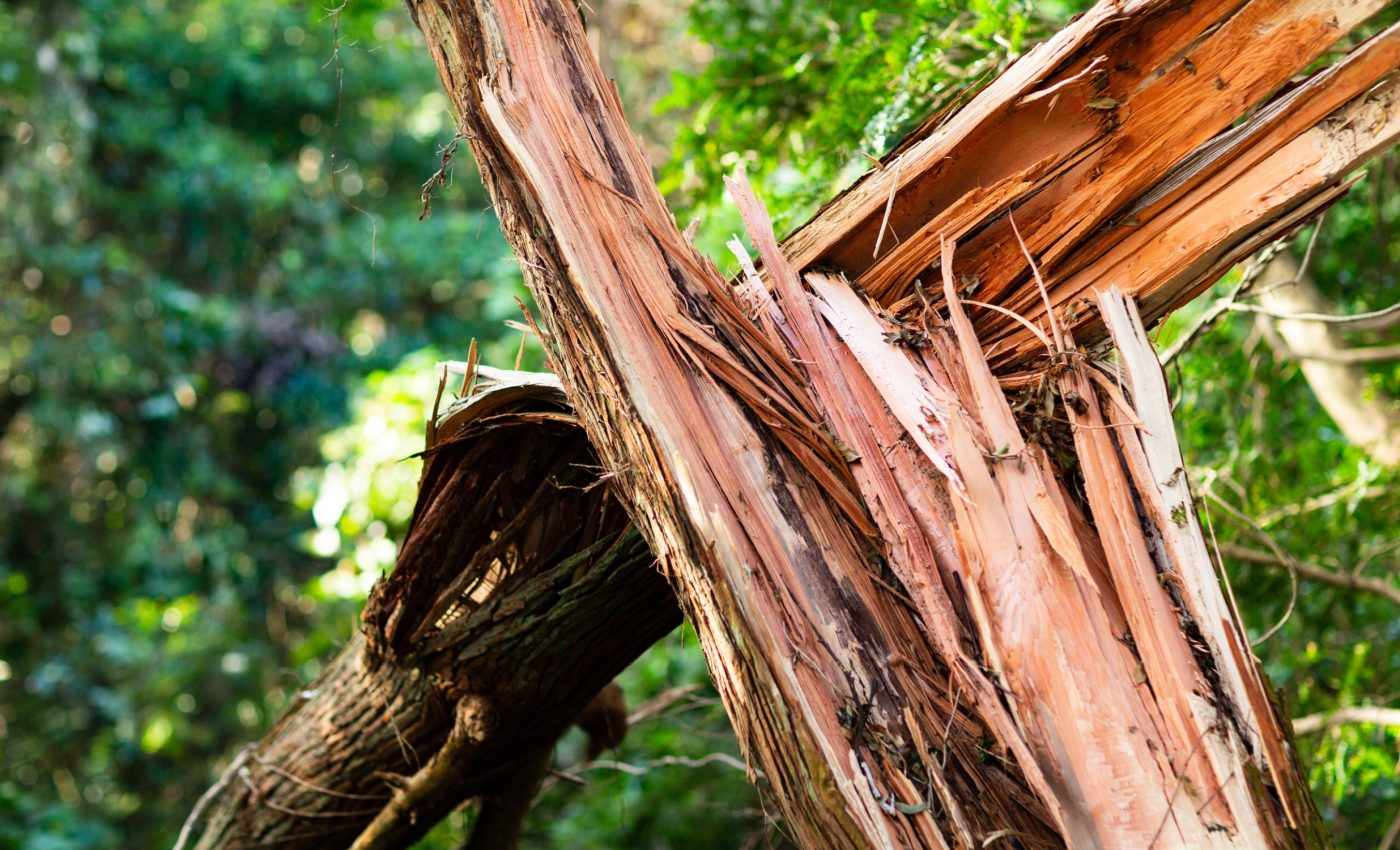
Tropical tree deaths are increasing, even in untouched forests
Tropical trees are dying at faster rates than ever before. While deforestation continues to be a major issue, even untouched forests are seeing increased rates of tree death.
Scientists have long pointed to drought, extreme heat, and wildfires as key contributing factors to tropical tree mortality. But now, they are highlighting another powerful and often-overlooked force: thunderstorms.
Unlike the more familiar hurricanes and cyclones, these storms are short but intense. Their high winds and lightning can be devastating to trees.
According to a recent study from researchers at the Cary Institute of Ecosystem Studies, these storms are becoming more frequent due to climate change – and they’re causing serious harm to tropical forests.
The climate cost of tropical tree death
“Tropical forests have massive effects on global climate. They’re like the lungs of the Earth, and we’re seeing trees in them dying at higher rates than in the past, and the composition of forests is changing, too,” said Evan Gora, a forest ecologist at Cary Institute of Ecosystem Studies.
“That could be really problematic for the future of not just tropical forests, but for the planet.”
While storms might seem like fleeting events, their impact on tropical forests can be lasting. These powerful bursts of wind and lightning can injure or topple even the largest trees, disrupting forest structure and biodiversity in seconds.
“Being in the forest during a tropical storm is unforgettable,” said study co-author Vanessa Rubio. “As the storm quickly builds, the sky darkens, humidity changes drastically, and strong winds shake the trees.
“Then, thunder and lightning come. Leaves and branches fall to the ground, rain pours down, and your instinct is to get back to the field station as quickly as possible.”
A silent driver of tree death
Thunderstorms haven’t been given the same attention as other climate-related threats. But that’s starting to change. The team re-examined data from earlier studies on tropical tree death and forest carbon levels. They found that storms are just as significant – if not more so – than drought or heat.
“We were surprised to find that storms may be the largest single factor causing tree death in these forests, and they’re largely overlooked by research into carbon storage in the tropics,” said Gora.
“Our estimates suggest that storms are responsible for 30 to 60% of tree mortality in the past, and that number must be increasing as storm activity increases by 5 to 25% each decade.”
When the researchers added storms to the largest plot-based study on tropical forest carbon, the picture changed dramatically. The previous data showed a sharp drop in carbon when temperatures rose above a certain point. But adding storms made that link disappear.
“But when you add storms, that relationship goes away,” Gora said. “It basically shows that you have to include storms, or you might not get the answers right.”
Double trouble for tropical trees
The team found that storms and drought often hit the same forests. The southern Amazon, for instance, experiences both frequent storms and severe water stress. These combined threats are reshaping the region’s ecology.
“During my studies on threats to tropical forests, my professors, our textbooks, and even overall climate policy never mentioned small, convective storms as a potential source of forest mortality,” said study co-author Ian McGregor.
“I don’t remember seeing them in global climate models used to inform climate policy. Given our findings, however, it’s clear we need a more thorough understanding of these storms to have more accurate climate models, and thus more effective policy,” he added.
So why have storms flown under the radar until now? Part of the reason is that heat and drought are easier to measure. Tools like weather stations and long-term satellite tracking make it simpler to monitor those threats.
But storms are different. They strike quickly and cause scattered damage. Satellites often miss the evidence of tropical tree deaths, and it’s nearly impossible for researchers to check vast forests manually after every storm.
Tracking trees from sky to soil
To address these challenges, the team launched the Gigante project, co-led by the University of Birmingham. It uses a combination of lightning-tracking systems, drones, and field experts to monitor large areas of tropical forest.
This enables scientists to pinpoint the location and extent of tree death, when the damage occurs, and which species are most at risk.
“If we make decisions about which species to plant or conserve based on an incorrect understanding of what’s actually killing these trees and which species are most vulnerable, those forests won’t reach their full potential,” said Gora.
Mature trees are especially vulnerable to storm damage. Without clearer insight, we might not realize our reforestation choices were flawed until decades later.
“However, if we can build a more holistic picture of what’s driving forest change, we can be a lot more confident in guiding forest management practices for long-term sustainability,” noted Gora.
Understanding why tropical trees are dying isn’t just a scientific concern – it’s a climate priority with global consequences.
The study is to be published in a perspective article in the journal Ecology Letters.
—–
Like what you read? Subscribe to our newsletter for engaging articles, exclusive content, and the latest updates.
Check us out on EarthSnap, a free app brought to you by Eric Ralls and Earth.com.
—–













